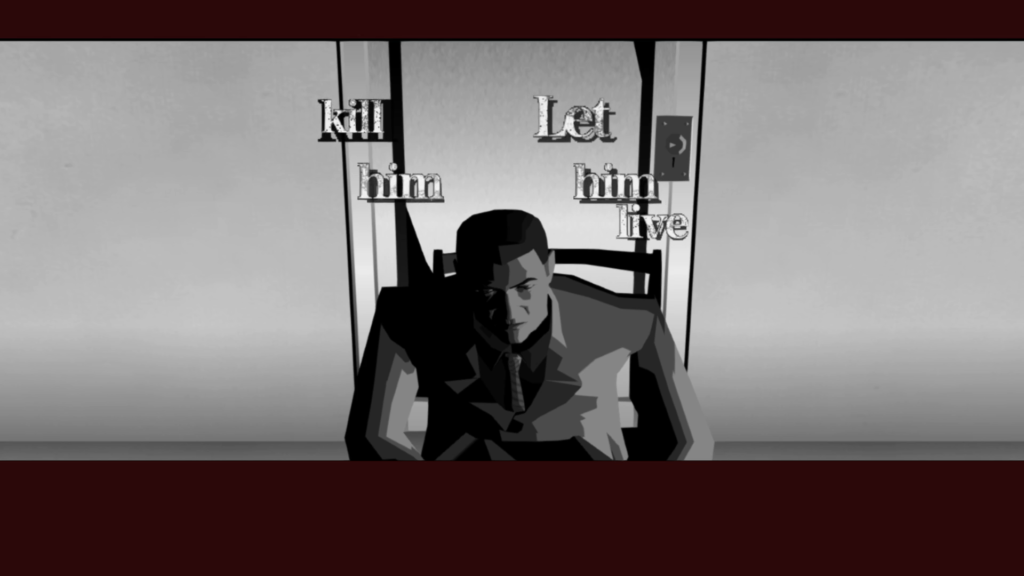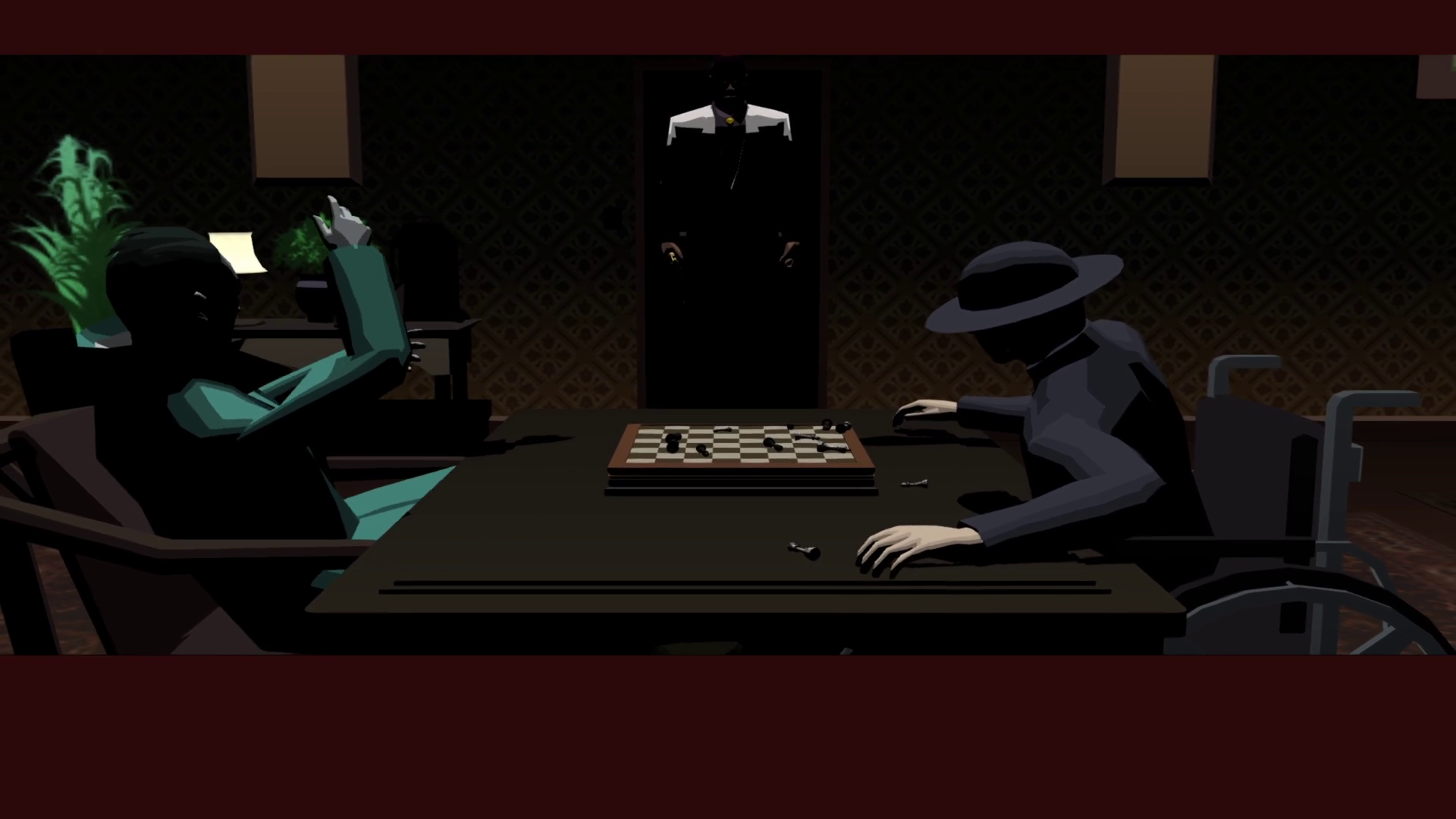
Not only does Emir fail to serve his own agenda, but his one real choice is hardly a choice: he can only pick one of two corrupt, oppressive false utopias that, to paraphrase Mills, value him as much as they would an insect. This choice also fails to change the world. “No matter which war-mongering, imperialist country the player chooses to have ascend at the end of killer7,” writes Piechota, “Harman Smith and Kun Lan are still continuing their battle, this time in Shanghai, one hundred years later” (4). Furthermore, killing the Last Smile fails to end the Heaven Smiles because “terrorism is the law of nature.” Even Jaco, then, fails at killing the past, not avenging his family.
Eliminating Kun Lan (twice) and Harman is insufficient to stop them because, like Nezu and Uminosuke, they are not men but representations of political processes. The first time Emir appears in the Forbidden Room, Harman and Kun Lan very uncharacteristically panic, almost seeming to have seizures. This would seem a genuine threat to their power. But by the time Garcian learns the “facts” behind the “truth” and comes to kill them, Harman instead calmly acknowledges this has all happened before: “Has another come to the surface?” As does Kun Lan: “We’ve been interrupted again.” (Emphasis mine.)

The earlier scene does not occur in 2011, like most of “Smile,” because in this moment Emir has the Golden Gun, which he loses as Garcian (see the above screenshot). He already killed the past, assassinating Harman and Kun Lan, at an earlier point. By 2011, there have been even more instances of Kamuis rising up to end the cycle by killing the liars who play games with normal people’s lives: the original, human Kun Lan and Harman Deltahead were shot and killed playing chess together in 1820. The Columbia graduate Kun Lan describes may well not be Emir but some other Kamui in a previous incarnation of the “cycle of crime, dehumanization and death.” A Kamui kills Kun Lan and Harman in 1820, and then more Kamuis gun them down again and again over successive cycles, including in December 2011. But Harman and Kun return anyway. The same synchronicities repeat from 1820 to 2011 and beyond.